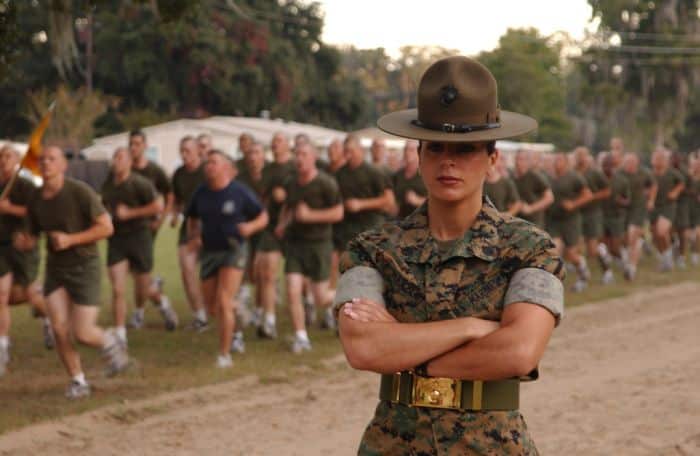
Do you remember the last advertisement that gave you goosebumps? I do. During my failed search for the remote last night, I saw a United States Marine Corps (USMC) recruitment commercial and I was captivated. The entire ad presented one single narrative of a young bully-confronter, turned bad ass rugby player, turned combat Marine and community builder. And she encapsulates all of the desired values that the USMC holds dear.
The hard chargin’ Marine featured in the ‘Battle Up’ commercial is Captain Erin Demchko, who serves with the III Marine Expeditionary Force in Okinawa, Japan. A Naval Academy graduate, Afghanistan war veteran, and leader of a Female Engagement Team (FET), Capt. Demchko’s career is exemplary. For every Capt. Demchko, there are countless female Marines with the same patriotism and fighting spirit. But this commercial sits in the long shadow cast by the Marines United nude photo scandal. And it is sullied by a USMC commander who publicly declared that the USMC is not interested in training female recruits who once played with Barbie dolls.
Despite all the badassery American servicewomen have displayed since the Gulf War (really, since WWII), servicemen troll their female counterparts, describe them in gendered ways, and largely underestimate how critical their involvement in 21st century conflict is to battles won. When will this change?
It has to change now, especially given President Trump’s recent authorization to increase troop levels in Afghanistan. When we start thinking about servicewomen as force multipliers and adopting gender perspectives in military missions, we will improve mission outcomes.
First, let’s internalize the fact that inclusion of women allows the military to field new capabilities, which in turn gives more options to the government regarding how they can mobilize these capabilities. The military has utilized women, like Capt. Demchko, in FETs that allow the military to collect reliable intelligence from Afghan women. Servicewomen have the opportunity to gain the trust of rural women which enables them to gather important information about the village and local politics. Such access affords the military with a better knowledge of local conditions, but also increases the perceived legitimacy of the military among community members.
Second, today’s missions are oriented around humanitarian interventions, peacekeeping, security enforcement, and post-war reconstruction. These engagements require new approaches. The addition of a gender perspective – an analytical tool used to expand what is traditionally considered important in an operational area – will transform the traditional war fighting model by creating space for important non-traditional security issues. For example, when the notion of violence is extended beyond the traditional understanding to include sexual violence targeted at civilians, a gender perspective will shape the tactics employed by militaries. Behavioral changes of servicewomen and men along patrol routes and consultations with local community members may stabilize an operational area more than traditional methods could.
Third, militaries must adapt to changing societal norms and evolving styles of warfare such that they attract and retain a diverse population. Indeed, our All-Volunteer Force would not survive without women. Militaries are Janus faced organizations that must react to the shifting strategic context by building militarily effective organizations and also be responsive to broader social values held by the society they serve. In other words, our military must look like us and be effective in order to successfully persist. This is exactly what the integration of women across military occupational specialties and the implementation of gender perspectives allows a military to achieve.
New narratives and accounts of warfare that include women as stakeholders, combatants, and peacekeepers will emerge when we all agree that women are strategic military assets. Just as the FETs provide the American military with new tools to employ, they engage the cultural elements of warfare by demonstrating to others the various social constructions of woman/female. Enter Capt. Demchko, badass combat warrior. Representations of male soldiers will also change as they adopt gender perspectives, which may transform the way men understand and perform masculinity too. When men begin to adopt a range of masculine and feminine perspectives, just as women have done over the last century in the military context, practices emerge that increase the military’s ability to protect civilians and establish order.
So if childhood toys are the criterion from which commanders judge who is most fit to serve, perhaps casting the net wide is best – Barbies, Legos, Cabbage Patch Kids, footballs, Tonka Trunks, My Little Ponies, and GI Joes all seem like good choices.
Emerald Archer, Ph.D. is Director, Center for the Advancement of Women, at Mount Saint Mary’s University.


